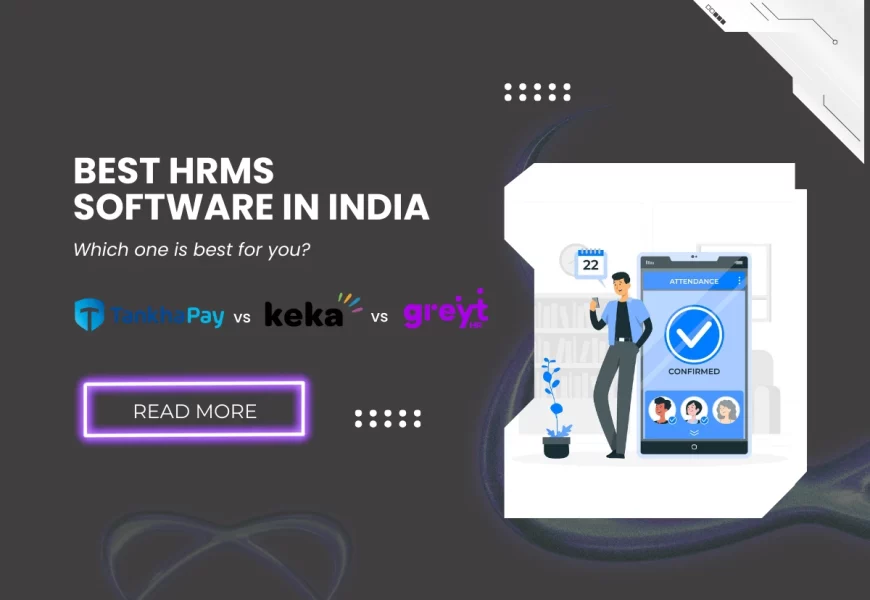
The Human Resource Management System (HRMS) landscape has drastically evolved over the past few years, especially in response to hybrid work environments, compliance automation, and the increasing need for data-driven HR decisions. As businesses shift from manual HR processes to digitized, intelligent platforms, the demand for powerful and scalable top HRMS software has skyrocketed.
In 2025, top-performing HRMS platforms are more than just attendance trackers or payroll processors—they are all-in-one tools that streamline core HR functions, empower employees, enhance performance tracking, and ensure compliance at every level. Let’s dive deep into what defines top HRMS software today and why it’s a strategic investment for growing businesses.
Why Businesses Need an HRMS in 2025
As organizations grow, so do their HR complexities. Managing employee lifecycles, remote workforce management, maintaining statutory compliance, and improving employee engagement are impossible without automation. An HRMS not only centralizes all HR operations but also eliminates redundancies, improves accuracy, and supports real-time decision-making.
Modern HRMS solutions are increasingly infused with AI, analytics, and cloud-based accessibility. These features enable HR teams to spend less time on administrative tasks and more time on strategic goals like talent development and organizational culture.
Key Features of Top HRMS Software in 2025
The best HRMS platforms today come equipped with a wide range of features that cater to the complete employee lifecycle. Some standout features include:
1. Cloud-Based Infrastructure
Top HRMS systems are cloud-hosted, ensuring data is securely stored, easily accessible, and updated in real time. Cloud infrastructure enables HR professionals and employees to access the system from any device or location—an essential feature in today’s hybrid work environment.
2. Automated Payroll Management
With built-in payroll modules, top HRMS software simplifies salary calculation, tax deductions, bonus management, and compliance with local laws. Payroll automation reduces errors and saves countless hours for HR and finance departments.
3. Employee Self-Service (ESS) Portals
ESS functionality allows employees to manage their own attendance, leaves, pay slips, and personal information—reducing HR dependency and increasing transparency within the organization.
4. Performance & Appraisal Management
From setting KRAs and KPIs to 360-degree reviews and feedback loops, performance management tools in HRMS software help align employee goals with organizational objectives. Regular feedback and performance tracking contribute directly to talent retention and development.
5. Leave & Attendance Tracking
Top HRMS software includes automated leave request workflows and biometric or app-based attendance monitoring. Integrated with GPS or geofencing for remote teams, this functionality improves accuracy and eliminates time theft.
6. Recruitment and Onboarding
Recruitment modules streamline hiring pipelines through resume parsing, interview scheduling, offer management, and onboarding checklists. New hires can complete documentation digitally, saving days of manual coordination.
7. Compliance Management
Modern HRMS platforms come with pre-configured statutory rules—EPF, ESI, TDS, PT, and more—based on Indian regulations or global standards. This ensures payroll and labor law compliance across locations.
HRMS Trends That Define 2025
To stay competitive, leading top HRMS software providers continue to innovate. Some of the most notable trends shaping the HR tech space this year include:
- AI-Powered HR Insights: Predictive analytics tools are now standard, helping organizations forecast attrition, track workforce productivity, and optimize hiring strategies.
- Mobile-First Approach: With more employees working on the go, mobile apps for HRMS platforms are becoming a priority.
- Integration with Collaboration Tools: Seamless integrations with platforms like Slack, Teams, and Zoom enhance communication and task alignment within teams.
- Custom Workflows: HRMS tools now allow companies to design their own approval workflows, making the system adaptable to their unique processes.
- Focus on Mental Wellness: Wellness surveys, mood trackers, and resource recommendations are integrated into employee engagement modules.
Benefits of Using Top HRMS Software
Investing in a reliable HRMS platform brings several long-term benefits for businesses, including:
- Efficiency Boost: Automating repetitive HR tasks saves time and resources while reducing the chances of manual errors.
- Improved Compliance: Staying up to date with ever-changing labor laws and regulations becomes easier with compliance-ready systems.
- Better Decision Making: Real-time dashboards and analytics enable HR leaders to make informed choices based on accurate data.
- Enhanced Employee Experience: Self-service tools, transparent processes, and continuous feedback loops contribute to higher employee satisfaction.
- Scalability: As your organization grows, a scalable HRMS platform grows with you—supporting more employees, locations, and workflows without disruption.
Final Thoughts: Choosing the Right HRMS
With dozens of top HRMS software options available in the market, it’s crucial to choose a solution that aligns with your organization’s size, industry, and operational needs. Whether you’re a startup seeking a basic HR suite or an enterprise looking for advanced automation and integrations, there’s a tailored HRMS out there for you.
When evaluating your options, prioritize usability, data security, post-sales support, and integration capabilities. A demo or trial version can also help you assess how intuitive the system is for both HR teams and employees.






